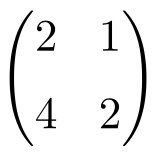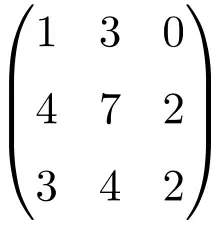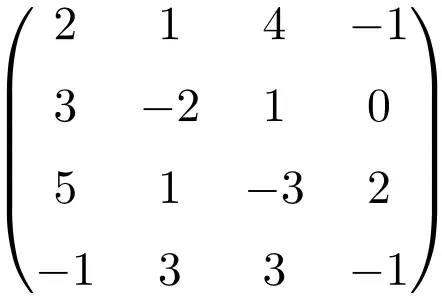On this post you will find what a singular (or degenerate) matrix is and when a matrix is singular. We also show you several examples of singular matrices and, finally, we explain all the properties of this type of matrix.
Table of Contents
What is a singular matrix?
The definition of a singular matrix, also known as a degenerate matrix, is as follows:
A singular (or degenerate) matrix is a square matrix whose inverse matrix cannot be calculated. Therefore, the determinant of a singular matrix is equal to 0.
When is a matrix singular?
You have to solve the determinant of the matrix to know when a matrix is singular:
- If the determinant of the matrix is equal to zero, the matrix is singular or non-invertible.
- If the determinant of the matrix is nonzero, the matrix is invertible.
See: invertible matrix
In conclusion, calculating the determinant of a matrix is the easiest way to check the invertibility of a matrix.
However, if you want to find the value of the inverse of a matrix, you should see how to calculate the inverse of a matrix.
Examples of singular matrices
Having seen the meaning of singular or degenerate matrix, let’s see some examples of singular matrices of different dimensions:
Example of a 2×2 singular matrix

We can easily check that it is a singular matrix by calculating its determinant:
The solution of the determinant of the matrix of order 2 is equal to 0, so it is a singular matrix.
Example of a 3×3 singular matrix

We must find the determinant of the matrix to prove that it is a non-invertible matrix:
The determinant of the matrix of order 3 results in 0, therefore, it is a singular matrix.
Example of a 4×4 singular matrix

By calculating the determinant of the matrix it is proven that it is a singular matrix:
The determinant of the matrix of order 4 is null, so its inverse matrix does not exist.
If you have questions about the calculations of the determinants, you can consult how to calculate a determinant in our website.
Properties of singular matrices
The characteristics of singular matrices are the following:
- At least two columns or two rows of a singular matrix are linear combination and are therefore linearly dependent.
- Any matrix that contains a row or column filled with zeros is a singular matrix.
- The rank of a singular or degenerate matrix is less than its size.
- The matrix product of a singular matrix multiplied by any other matrix results in another singular matrix. This condition can be deduced from the properties of the determinants:
- Similarly, the power of a singular matrix is equal to another singular matrix, regardless of the exponent to which it is raised.
- The transpose of a singular matrix gives another singular matrix, since the determinant of a transposed matrix is equivalent to the determinant of the untransposed matrix:
- Multiplying a singular matrix by a scalar does not change its condition as a degenerate matrix.
- The adjoint of a singular matrix is also singular.
See: how to find the adjoint of a matrix.
- Triangular matrices and diagonal matrices are degenerate matrices if at least one element of their main diagonal is zero.
- Obviously, the null matrix is a singular matrix.
- In the same way, a nilpotent matrix is also a singular matrix.
- A system of linear equations associated with a singular matrix has no solution or has infinite solutions.
- Finally, a square matrix is singular if and only if it has at least one eigenvalue equal to 0.